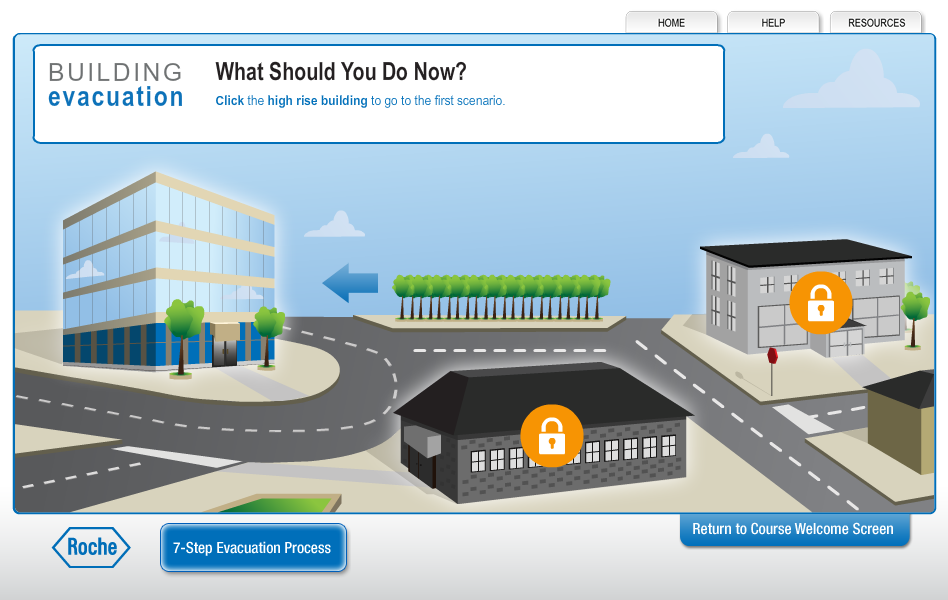Some companies think the cost of eLearning is ONLY driven by the quality of the images, audio, visual, and complex interactions. The more “fancy” multimedia eLearning has, the more expensive it will be. Therefore, a stripped down course with minimal aesthetic value will be the most cost-effective.
But while adding multimedia to an eLearning course will increase the cost, this is not the main contributor to eLearning cost. In fact, it’s far from being the biggest contributor.
The truth? It’s hard to price a course based on how it looks in the end. An incredibly cool-looking course that really helps people learn can be had for a bargain, while a text-heavy course with a next button can cost an arm and a leg. It all really depends on the needs and structure of the organization requesting the course.

I interviewed VP of Client Relations Leanne Batchelder to learn more about how eLearning projects can be carefully planned to work with a variety of budgets. Leanne is the “face” of BLP for many of our clients, and she is frequently the one to create and modify project work plans and pricing.
The image above is of a launch screen from a Building Evacuation Course we developed for a Fortune 500 client. Leanne actually designed this course, and I scripted. We frequently use this course as a sample of great graphic design, multimedia on a budget, and innovative course design. It is one of our favorite past projects, yet it was actually one of our least expensive projects.
Let’s look at the characteristics of a “low budget” and “high budget” course, shall we?
Low Budget Means Less Reviewers and Smes
Leanne reminded me that the Building Evacuation course was completed with a limited number of reviewers and SME interactions. We worked with two people to gather content, and a single SME phone call was used to write the whole course. The client did not review the script beforehand, so we were able to go to Alpha before receiving any changes.
In short, it was a concise, direct, focused approach.
Low Budget Means Straightforward Content
Another key to success with the low-cost Building Evacuation project? The content is straightforward. We were not teaching anyone brain surgery; we were teaching them how to evacuate a building. The policy and procedures were straight forward and easy to find, so we were able to organize them quickly.
With so much time saved, Leanne was able to budget most of the development cost towards creating visuals and multimedia interactions. The result? A slick looking course that was fast and easy for us to create… and affordable for the client.
As Leanne puts it, “the clay is there to mold.” In a low-cost project, we are given one document that the client has put together for us. The client identifies the core information and it is our job to make it instructionally sound.
When to Spend More
Our role as consultants extends far beyond developing eLearning as quickly and affordably as possible. We develop full-scale curriculums, conduct Needs Analysis, and develop a wide range of games and mobile solutions. The performance need your organization has may be too complex to solve with a single 20 minute eLearning course. Also, the sheer number of stakeholders involved may necessitate more reviews and revisions to ensure buy-in.
If your organization needs large review teams and many review cycles for sound business reasons, then it makes sense to invest a little more in a learning solution.
And while it sometimes makes sense to have your SMEs spend their time searching for and organizing all the necessary content, their time may be too valuable to do so. In a situation like this, your organization can gain efficiency and actually save money by having an outside vendor come in and organize the content for less than your SME’s pay grade.
Factors that Increase Cost
No matter what your project is, or how big your organization is, you probably want to keep your learning solution as affordable as possible. And while Leanne points out that use of audio, more complex media, illustrations and gamified learning might increase the price, the biggest enemy to training budgets is scope change.
According to Leanne, most scope changes happen when a client has one or more of the following:
- Large project team
- Large number of reviewers
- Little to no content documented and organized
- A need to have multiple detailed reviewers, with decisions made by consensus
- A key stakeholder who only wants to see the solution at the very end (this is a BIG mistake).
There are ways to produce powerful eLearning, games, and instructor-led courses on a fixed budget. There are also times when it makes sense to increase the cost of a project to get it done right. In the end, you have to do what’s right for you… and what makes sense for your organization. Use our examples of common ways project costs rise to help in your planning process.


